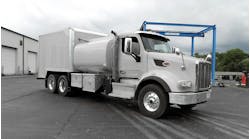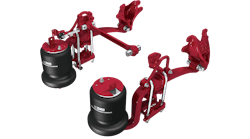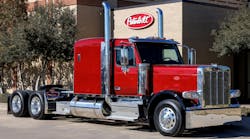Improvements have been made in truck safety, but 4,000 people still lost their lives last year in truck-involved crashes, according to Jack VanSteenburg, chief safety officer for the Federal Motor Carrier Safety Administration (FMCSA). “We can do better; we need to do better,” he told tank truck fleet managers at the National Tank Truck Carriers 64th Annual Conference May 8 in San Francisco CA.
VanSteenburg said rollovers continue to be a problem for tank truck fleets. “We’ve got to stop the rollovers,” he said. “Drivers have to slow down. NTTC has been a good partner in helping us broadcast that message.”
VanSteenburg said roll stability systems are good technology that will help prevent rollovers. FMCSA’s rule proposal mandating roll stability systems has been at the Office of Management and Budget for 90 days now.
The Compliance, Safety, and Accountability (CSA) program is becoming in valuable tool in promoting safety and reducing truck-involved crashes. “We’ve now registered 525,000 carriers and we have sufficient data on 200,000 of them,” he said. “We issued almost 1,000 shutdown orders for bad carriers last year.”
Progress continues on the new Hazmat Basic. “You (in the tank truck industry) should have a problem with that Basic,” he said. “It’s what you do every day. Other carriers are likely to have problems due to placarding and such.”
Work continues on a rule mandating electronic on-board recorders. “This is a priority for us,” VanSteenburg said.
With the oilfield boom continuing, FMCSA is preparing a guidance on the oilfield exemption for hours of service. He pointed out that the rule only applies for vehicles designed specifically for oilfield operation. Vehicles that don’t qualify almost certainly will include crude oil transports and vacuum transports that are designed for over-the-road operation.








